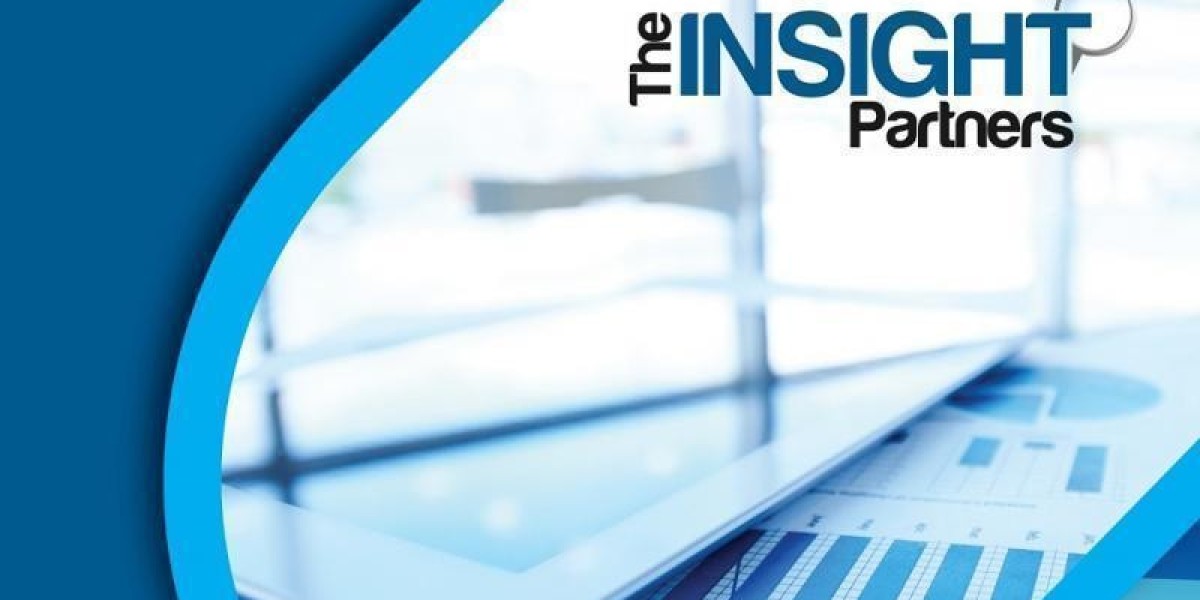Aspergillosis refers to a spectrum of infections caused by Aspergillus species, ranging from allergic reactions to invasive and life‑threatening systemic disease. In vulnerable populations — such as immunocompromised patients, transplant recipients, or those undergoing chemotherapy — the risk is especially high, demanding more efficacious and targeted therapeutic options.
According to The Insight Partners, the Aspergillosis Drugs Market is projected to grow at a compound annual growth rate (CAGR) of about 4% from 2025 to 2031.The market is segmented primarily by Type (Triazoles vs Other therapeutics) and by Region (North America, Europe, Asia Pacific, etc.).
While report provides the foundational view, supplementary sources suggest that broader “aspergillosis treatment / antifungal” markets may grow at somewhat higher rates, depending on inclusion of related fungal infections and novel therapies. For instance, some estimates put growth in double digits in compound markets encompassing systemic fungal infections.
In sum: the market is expected to expand moderately, driven by clinical need, technology advancement, and increasing awareness, but also constrained by therapy cost, drug resistance, and safety profiles.
Key Market Drivers & Challenges
Drivers
- Rising Prevalence of Aspergillosis & Immunocompromised Populations
An aging population, wider use of immunosuppressants (for cancer, transplants, autoimmune diseases), and growing incidence of chronic comorbidities fuel the susceptible patient pool. expressly lists “Increasing incidence of Aspergillosis infections” as a prime growth driver. - Growth in Transplant & Cancer Therapies
As organ transplantation rates rise globally, so does the use of immunosuppressive regimens – leading to increased fungal infection risk. The report highlights this as a specific driver. - Innovation in Antifungal Therapies / Drug Development
Traditional antifungals like amphotericin B and older azoles have safety, resistance, and pharmacokinetic challenges. The development of newer triazoles, combination therapies, targeted delivery, and biologic/immunotherapy adjuncts is creating a more favorable therapeutic environment. - Increased Awareness, Diagnostics & Early Detection
Better diagnostic tools (e.g. PCR assays, galactomannan antigen detection) help detect invasive aspergillosis earlier, thus driving demand for timely antifungal therapy.
Challenges & Restraints
- Drug Resistance & Stewardship Pressure
Resistance to conventional antifungals, especially among Aspergillus spp., is a growing concern. The market must contend with preserving efficacy via stewardship, which can dampen indiscriminate use. - Safety & Toxicity Limitations
Many antifungals carry risks — hepatotoxicity, nephrotoxicity, drug–drug interactions — which limit their use, especially in fragile, comorbid patients. - Cost & Reimbursement Constraints
Advanced antifungal therapies and biologics tend to be expensive. In lower- and middle-income regions, affordability and reimbursement constraints may impede uptake. - Unmet Clinical Data & Slow Pipeline in Some Areas
Translating novel candidates from bench to bedside is often slow in fungal therapeutics. The relatively smaller patient populations (compared to, say, cancer) and regulatory hurdles make investment riskier.
Growth Strategies & Market Positioning
To succeed in the Aspergillosis Drugs Market, pharmaceutical companies generally adopt an array of strategies. Based on The Insight Partners and related market research commentary, these include:
- New Product Launches / Innovation
Bringing next‑generation triazoles, novel mechanisms of action, or formulation improvements (e.g. better absorption, fewer side effects) is central. Combination therapies or formulations with synergistic or complementary antifungal agents are gaining traction. - Mergers, Acquisitions & Licensing
Firms may acquire smaller biotech companies or license in promising antifungal candidates to expand their pipelines and market reach. - Strategic Collaborations & Partnerships
Alliances with other pharma or research institutions enable sharing of development risk, co‑development, and wider geographic reach. - Geographic Expansion & Market Penetration
Targeting emerging markets (Asia Pacific, Latin America) where healthcare infrastructure is improving and unmet need is high is a key lever. Also, launching generics or lower-cost versions in price-sensitive markets. - Regulatory & Reimbursement Strategy
Ensuring fast-track designations, orphan indications, or priority review statuses can accelerate time to market. Companies also lobby for favorable reimbursement or inclusion in national formularies. - Post‑approval Lifecycle Management
After initial product launch, companies may develop improved formulations, deliver generics, extend indications (e.g. pediatric use), or invest in real-world evidence to expand adoption. An example: launching a generic version of posaconazole in India. - Focus on Antifungal Stewardship & Resistance Mitigation
Companies can promote responsible use, dose optimization, and combination regimens to limit resistance development, which protects long-term market sustainability.
Key Segments & Market Structure
By Drug Type / Therapeutic Class
In segmentation, the market is divided into:
- Triazoles
This is the dominant class, due to their broad efficacy, acceptable safety profiles, and central role in current treatment guidelines. - Other Therapeutics
This catches non‑triazole antifungals or adjunct approaches (e.g. echinocandins, newer classes).
Complementing this, broader treatment / antifungal market segmentation includes azoles, echinocandins, polyenes, allylamines, corticosteroids, etc.
By Region / Geography
segments by major geographies: North America, Europe, Asia Pacific, South & Central America, Middle East & Africa.
- North America
Historically the largest share due to strong healthcare systems, quicker uptake of new therapies, and better reimbursement environments. - Europe
Strong presence, though heterogeneous across countries in adoption and reimbursement policies. - Asia Pacific
Often the fastest growth area. Rising healthcare investment, large patient populations, growing awareness, and increasing diagnostic capacity make it an attractive expansion frontier. - Latin America / Middle East & Africa
Smaller current shares but considerable upside if affordability and infrastructure improve.
Major Players & Competitive Landscape
lists the following among key players in the Aspergillosis Drugs Market:
GlaxoSmithKline, Astellas Pharma, Mylan (now part of Viatris), Pfizer, Gilead Sciences, Glenmark Pharmaceuticals, Mayne Pharma, Merck & Co., Eli Lilly, and Novartis.
Other sources broaden the roster to also include Abbott, Bayer, F2G, Basilea Pharmaceutica, and biotech upstarts.
Some notable recent moves and examples:
- Generic launches / competition
For example, in 2022, Endo launched the first generic Noxafil (posaconazole) injection in markets for invasive aspergillosis.
Also, Glenmark reportedly launched a lower-cost generic version of posaconazole in India to expand access. - Expanded indications / pediatric approval
Pfizer’s isavuconazole (Cresemba) gained expanded indication approval to include pediatric invasive fungal infections in the U.S., thereby enlarging addressable population. - Pipeline & collaborations
Some companies are licensing or co‑developing new triazole or antifungal candidates focused on resistant Aspergillus strains.
Given the small but critical niche, competition is not purely on volume — differentiation via safety, resistance profile, ease of dosing, and cost plays an important role.
Outlook & Strategic Imperatives
Looking ahead, the Aspergillosis Drugs Market is likely to evolve under the dual pressures of clinical need and the constraints of safety, cost, and resistance. Below are strategic imperatives for companies, investors, and stakeholders:
- Invest in Novel Modalities & Biologics
The integration of immunotherapies, monoclonal antibodies, or smart drug‑delivery systems (e.g. targeted fungal site delivery) may redefine standards of care. mentions "integration of biologics and immunotherapies" as a future trend. - Optimize Combinations & Regimens
Rather than monotherapy, combination antifungal regimens (with synergistic mechanisms) are expected to become standard in severe or resistant cases. - Expand Access Through Tiered Pricing & Generics
To capture underserved markets, companies must tailor affordability strategies, including generics, licensing, and local manufacturing. - Strengthen Diagnostics & Companion Tools
Investing in rapid diagnostics and biomarkers will be key, as early detection directly translates to increased treatment uptake and better outcomes. - Focus on Stewardship & Resistance Monitoring
Maintaining efficacy over time demands careful surveillance, dose optimization, and education programs to limit misuse. - Regional Customization
Strategies must tailor to each geography: e.g. faster regulatory pathways in developed markets; partnerships with local pharma in emerging markets. - Raise Clinical Evidence & Real‑World Data
Real‑world safety/efficacy data, long-term follow-up, and evidence in diverse populations will help adoption and reimbursement.
Get Sample PDF- https://www.theinsightpartners.com/sample/TIPRE00021681/
Conclusion
The Aspergillosis Drugs Market, as characterized by The Insight Partners, is poised for steady, sustainable growth at roughly 4% CAGR through 2031. Its trajectory is shaped by the increasing burden of immunocompromised populations, the rising number of transplant and cancer therapies, and the urgency of more effective antifungal treatments.
Success in this domain will not be won just by having an efficacious molecule — it demands strategic orchestration of innovation, access, affordability, and resistance management. Top pharmaceutical players currently dominate the space, but mid‑sized and niche biotech firms may disrupt with creative mechanisms or platform technologies.
Key segments to watch include triazoles (likely to remain dominant), combination therapies, and emerging biologic/immunologic adjuncts. Regionally, while North America and Europe maintain leadership, Asia Pacific and other emerging markets are expected to register the fastest growth.












